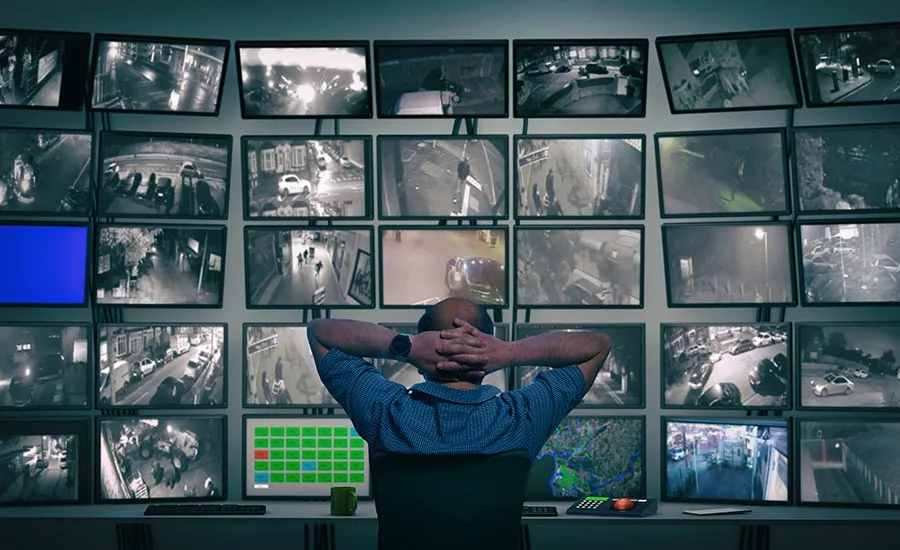Multi-Sensor Cameras Save Money for Installers and Customers

While the concept of the multi-sensor or multi-directional camera is not new, there have been noteworthy advancements that make these cameras the best choice for many types of security installations. In the past, many multi-sensor cameras were not able to deliver high frames per second / per sensor (fps) for smooth, clear motion capture and frequently represented a compromise in performance. Modern multi-directional cameras can now deliver high frame rates, up to 60fps (per sensor), while providing up to 150dB of WDR (wide dynamic range) for excellent low light performance. The latest multi-sensor cameras reduce the number of cameras required while making any future maintenance and upgrades an insignificant event for organizations.
Difference in Design
When it comes to coverage, multi-sensor cameras differ significantly from fisheye lens cameras. While a fisheye lens can produce a 360° image, massive distortion at each edge of the image often will require a form of software dewarping to be used effectively. A four-sensor multi-directional camera may cover the same area while producing clearer and more focused details in conventional video formats. A single multi-sensor camera can provide high-resolution coverage of up to four areas, while reducing wiring and power requirements, as well as mounting hardware when compared to conventional camera form factors. Also, many VMS software solutions will allow multi-sensor cameras to operate under a single camera license, reducing costs in recording.
Flexibility and Serviceability
With a modern multi-sensor camera, it’s completely possible to capture a wide angle in one direction while monitoring a long hallway in another. The usage of modular, custom sensors and lenses enables installers to precisely cater to the unique needs of each coverage area and desired field of view. The ability for an installer to easily snap these components into place in the field means no guess work when ordering and configuring systems. This also means that any changes in the future, be it maintenance or upgrades, are effortless since a laborious uninstall and re-install of a complete camera is no longer needed.
Storage and Infrastructure
Higher resolutions and more sensors can increase demand on a surveillance system’s storage and infrastructure. However, compression technology has also advanced to keep pace. H.265 compression technology saves bandwidth over legacy H.264 compression technology and doesn’t require new infrastructure or additional storage to be implemented.
Not every multi-sensor camera on the market supports H.265, so it’s important to look at and understand a camera’s specifications to not overburden existing infrastructure when adding multi-directional cameras and selecting the highest quality multi-directional camera.
An Analytics Hub
Multi-sensor cameras now have the ability to analyze the images they are capturing in many ways. The best cameras include a range of built-in video analytics that can alert security personnel to specific types of motion such as loitering, appear, disappear, enter/exit and directional / virtual line crossing. They can also detect faces and if the camera is being tampered with.
Multi-sensor cameras have advanced to a new level of performance and ease of installation that makes them a compelling choice for many organizations. A perfect solution for hospitals, schools, casinos and retail organizations, these cameras provide unprecedented value for both installers and end users. Installers can deliver custom flexibility in terms of field of view, resolution and frame rate for each sensor; all while minimizing associated costs of wiring, VMS licensing and mounting hardware for end-users. Installing fewer cameras also helps meet the aesthetic requirements of architects and designers. With onboard analytics and efficient H.265 encoding, it’s now possible to increase coverage and image quality with little to no impact on existing storage and network infrastructure.
Looking for a reprint of this article?
From high-res PDFs to custom plaques, order your copy today!








